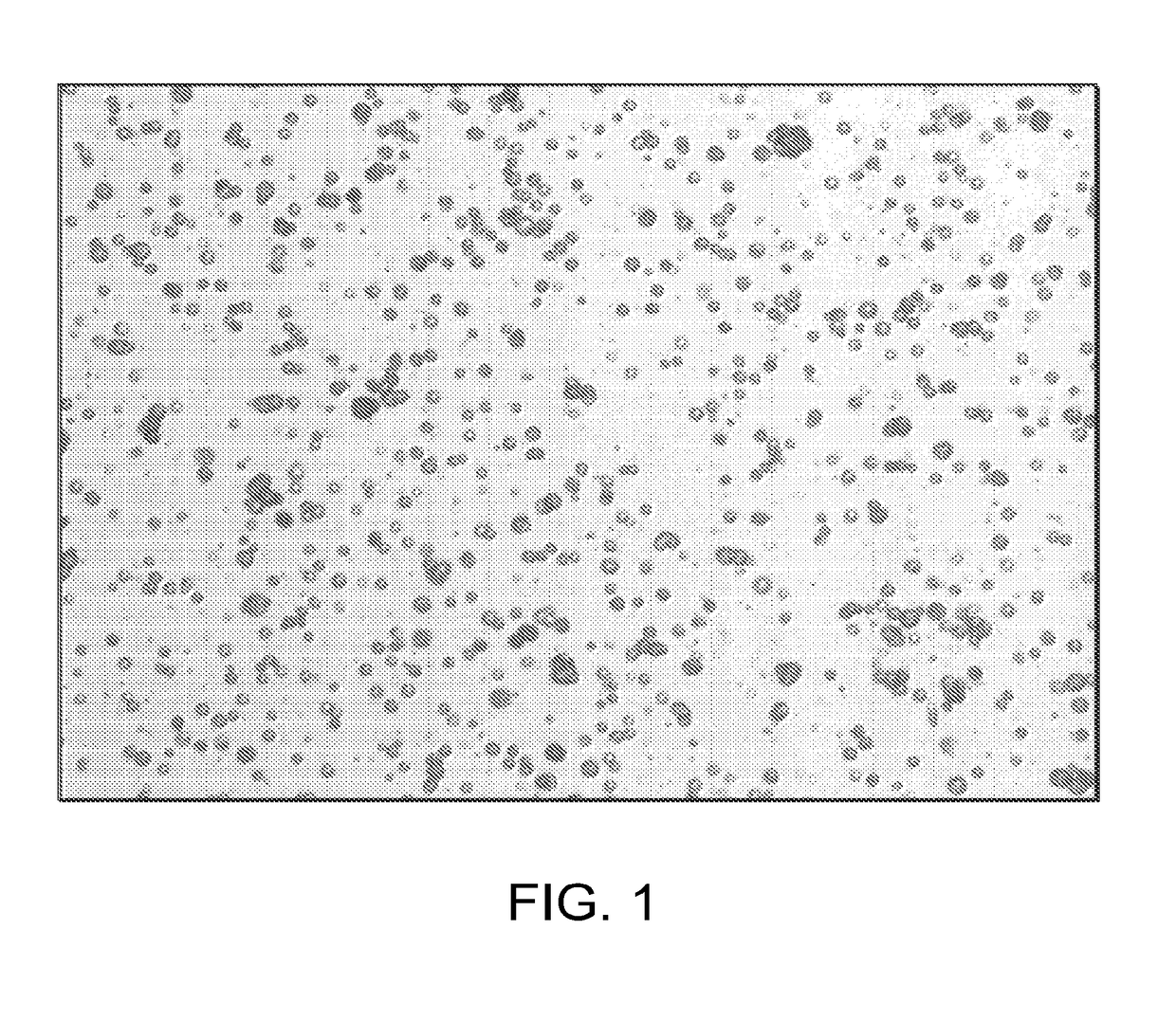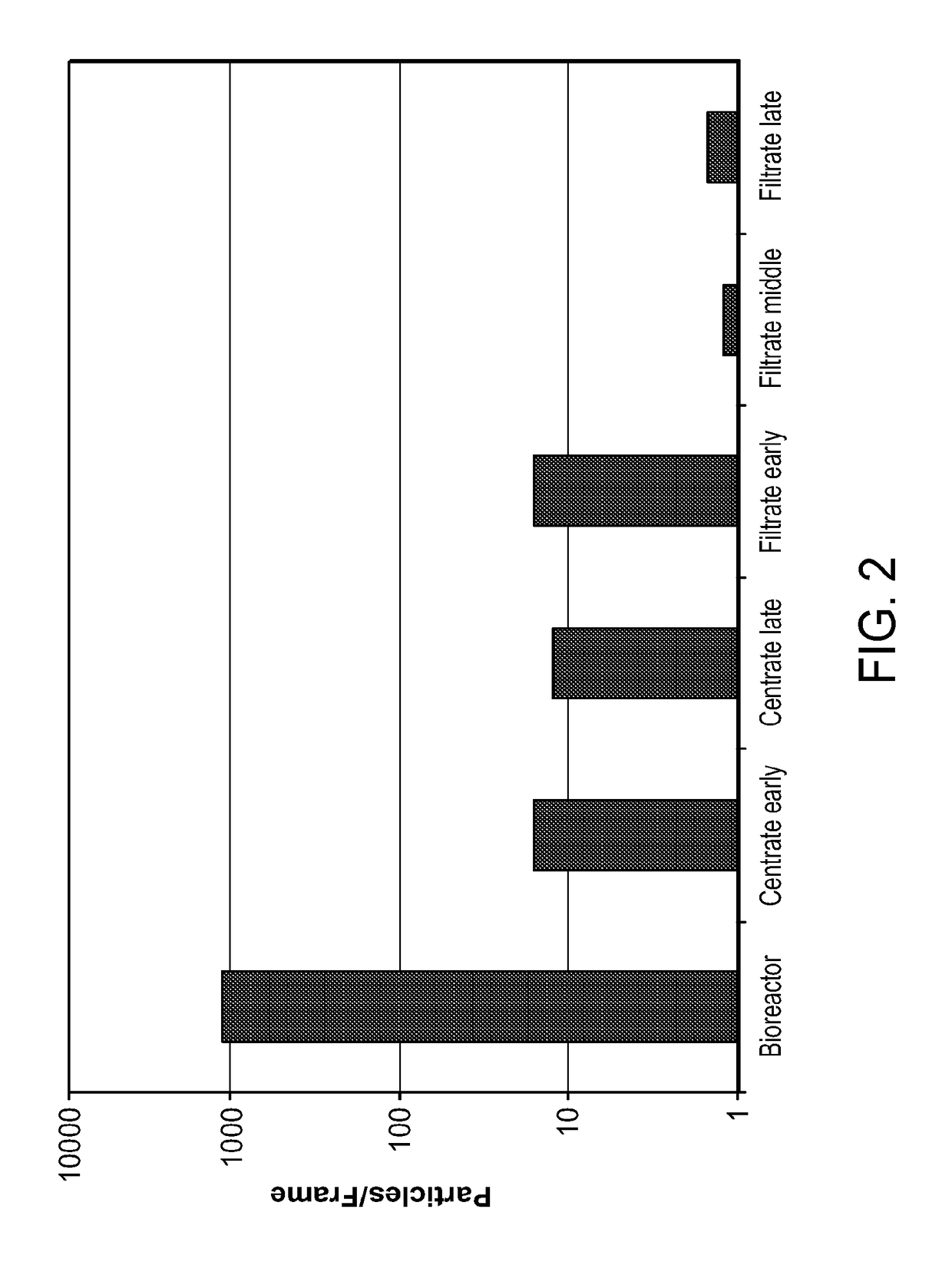Methods for the harvesting of cell cultures
a cell culture and cell culture technology, applied in the field of solid liquid separation, can solve the problems of clogging of depth filters, unable to account for geometric differences between centrifuges, and often not comparable formazin standards, etc., to reduce the cost of harvesting process, improve efficiency, and reduce the effect of depth filter blockag
- Summary
- Abstract
- Description
- Claims
- Application Information
AI Technical Summary
Benefits of technology
Problems solved by technology
Method used
Image
Examples
example 1
[0118]One hundred litres of a mammalian (CHO) cell based harvest broth was processed through a disc-stack centrifuge into a multilayer, single-stage, depth filter. Centrifugation samples were taken at approximately 2 and 12 minutes into a 14 minute centrifugation cycle. Additionally, three samples were taken exiting the depth filter over a 3 hour time period. The individual samples were circulated through the CCD sensor unit for approximately five minutes in order to obtain 3000 frames of data. The CCD sensor unit used was in the backlight mode. Every tenth frame was analyzed using the image processing software. The system used was able to identify particles ranging from 0.4-480 μm.
[0119]Prior to the execution of the experiment, the appropriate zoom level, distance calibration, and image intensity were determined and set. The data were processed in a serial manner. The turbidity of each sample was measured using a laser based turbidimeter calibrated with Stablcal Formazin standards....
example 2
[0123]The proof-of-concept study described in Example 1 above shows that analyzing the centrate of the centrifugation step using a CCD sensor unit is useful for developing a harvest process with an optimal Q / Σ ratio for the centrifugation step. This is the key parameter used for scaling of centrifugation operations on the concept of equivalent settling area.
[0124]To further test the capability of CCD sensor units to optimize the centrifugation step of a harvest operation, the Q / Σ values for a harvest process on a lab-scale disc stack centrifuge were varied and the centrates were analyzed via particle counting and turbidity measurements. Three Q / Σ values were tested. The results show that Q / Σ at setting #3 had the lowest number of particles in the centrate (FIG. 5), which was consistent with the turbidity measurements indicating the lowest “cloudiness” for this sample (Table 1). These data demonstrate that we could detect changes in centrifugation performance by changing the input fl...
example 3
[0125]The following procedure provides an example of how one can determine the optimum relative centrifugal force (RCF) for the centrifugation of a scaled up harvest process using data obtained from a small scale experiment whereby a CCD sensor unit is used to analyze the output of the centrate (FIG. 6).
General Procedure
[0126](a) Harvesting Process
[0127]Prior to conducting the experiment, one needs to determine the DOE input parameters to be tested. The lab scale centrifuge is then set up in a manner in which samples may be collected. One then determines one or more of the following parameters for the material to be harvested: (i) cell viability, (ii) total cell count and / or (iii) percent solids by volume. Material is then placed in a collection container or the procedure is operated out of the bioreactor and kept at constant agitation to prevent settling of the cells. The centrifugation is then started at the first RCF condition. At the first Q setting, the pump is started and a st...
PUM
| Property | Measurement | Unit |
|---|---|---|
| time period | aaaaa | aaaaa |
| diameter | aaaaa | aaaaa |
| diameter | aaaaa | aaaaa |
Abstract
Description
Claims
Application Information
 Login to View More
Login to View More - R&D
- Intellectual Property
- Life Sciences
- Materials
- Tech Scout
- Unparalleled Data Quality
- Higher Quality Content
- 60% Fewer Hallucinations
Browse by: Latest US Patents, China's latest patents, Technical Efficacy Thesaurus, Application Domain, Technology Topic, Popular Technical Reports.
© 2025 PatSnap. All rights reserved.Legal|Privacy policy|Modern Slavery Act Transparency Statement|Sitemap|About US| Contact US: help@patsnap.com



